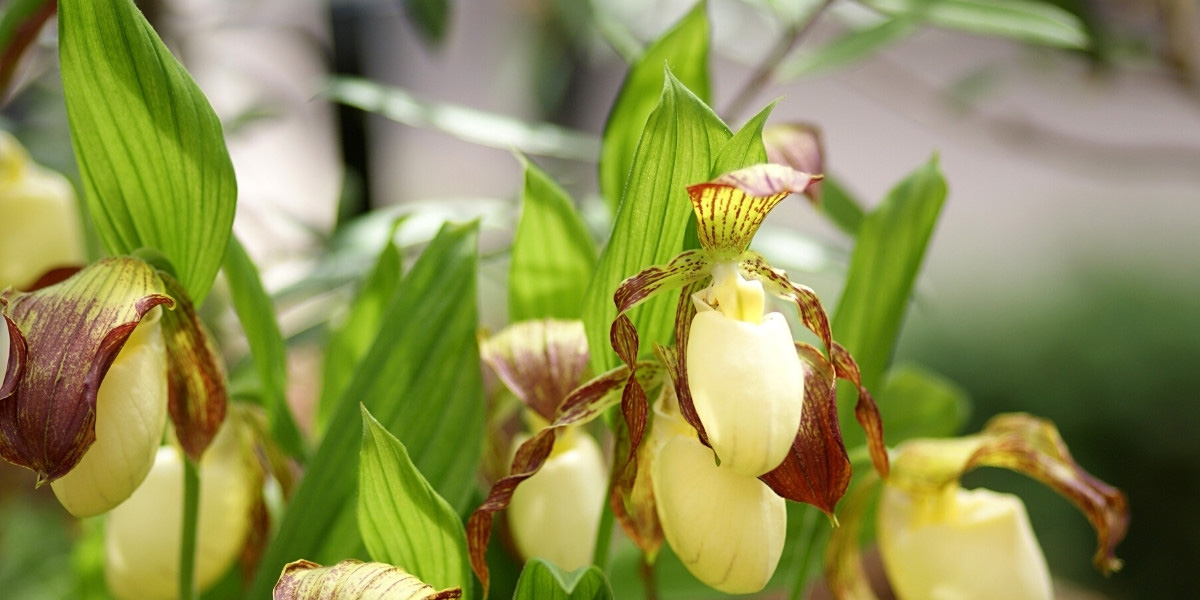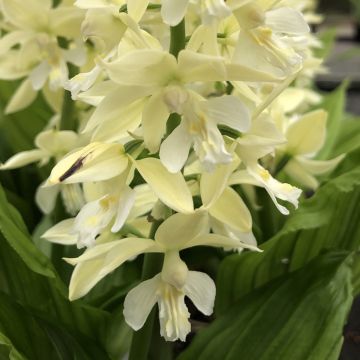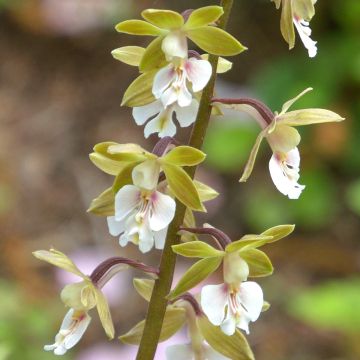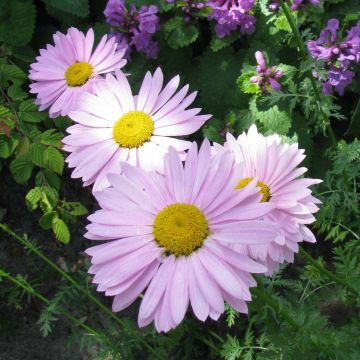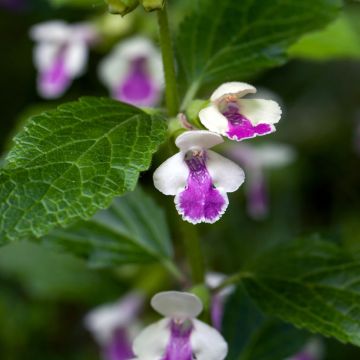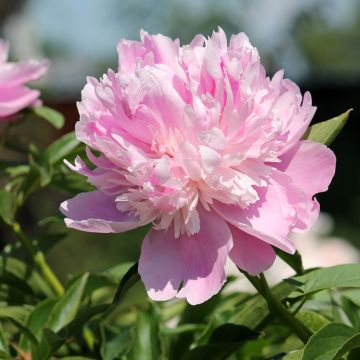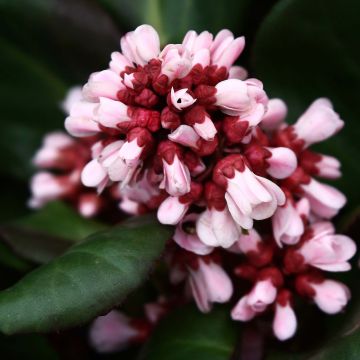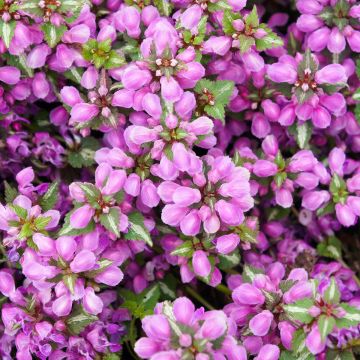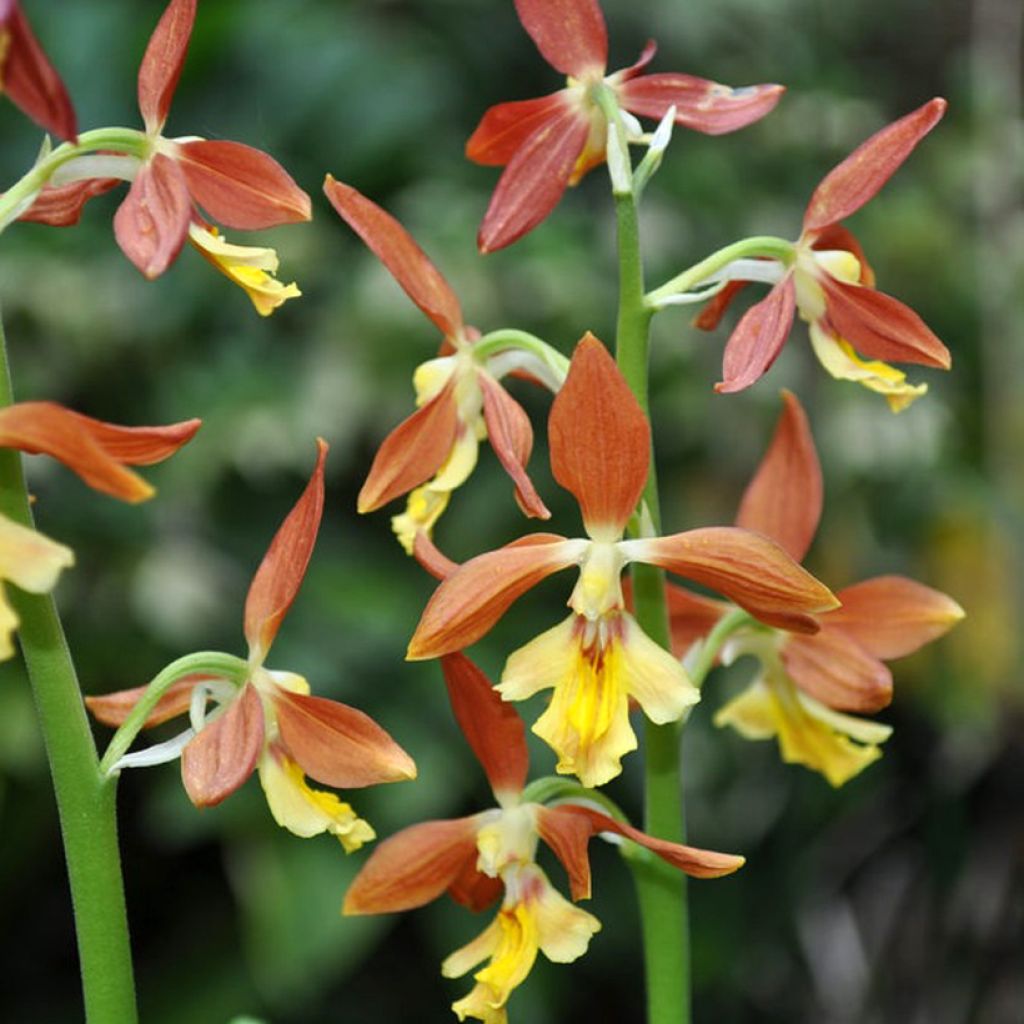

Calanthe discolor Takane - Christmas Orchid
Calanthe discolor Takane - Christmas Orchid
Calanthe discolor (x) sieboldii Takane
Christmas Orchid, Hardy Orchid
Special offer!
Receive a €20 voucher for any order over €90 (excluding delivery costs, credit notes, and plastic-free options)!
1- Add your favorite plants to your cart.
2- Once you have reached €90, confirm your order (you can even choose the delivery date!).
3- As soon as your order is shipped, you will receive an email containing your voucher code, valid for 3 months (90 days).
Your voucher is unique and can only be used once, for any order with a minimum value of €20, excluding delivery costs.
Can be combined with other current offers, non-divisible and non-refundable.
Home or relay delivery (depending on size and destination)
Schedule delivery date,
and select date in basket
This plant carries a 12 months recovery warranty
More information
We guarantee the quality of our plants for a full growing cycle, and will replace at our expense any plant that fails to recover under normal climatic and planting conditions.
Would this plant suit my garden?
Set up your Plantfit profile →
Description
Calanthe 'Takane' is a superb terrestrial orchid resulting from a cross-breeding between two botanical species. This highly floriferous hybrid produces spikes of small flowers with colors that vary depending on the subjects, combining shades of orange-yellow, light brown, or apricot tones. The flowering period lasts for two months and releases a curious scent of cloves. Its cultivation is somewhat delicate, requiring a slightly acidic and well-drained soil that remains cool in summer and well-drained in winter, as well as a semi-shaded exposure. Additionally, its hardiness is limited, up to approximately -10°C, in dry soil and protected by mulch. Fortunately, it is easier to grow in pots, allowing its beauty to be enjoyed in climates with harsh winters.
Calanthe belongs to the Orchidaceae family, which is rich in more than 25,000 species, including 160 in France alone! This diverse family includes epiphytic species that use trees as support, as well as terrestrial species that grow in the ground. The Calanthe genus is part of the latter group and comprises over 150 species native to tropical and subtropical regions, mainly in Asia.
Calanthe 'Takane' is a hybrid obtained by cross-breeding two botanical species, Calanthe discolor (from Japan, China, and Korea), with bi-coloured flowers in light brown and pale pink, and Calanthe sieboldii from Japan, with a long flowering period of lightly scented lemon-yellow flowers. This deciduous plant forms pseudo-bulbs (rhizome-like structures) that allow it to survive winter and start anew in spring. In March-April, it produces leaves of a beautiful bright green colour, vivid and slightly glossy on the surface. Elliptical in shape, wide, measuring approximately 15-18cm long and 6-8cm wide, the slightly plicate leaves with visible veins have a sheathing base, surrounding the flower spike that appears about a month later. Measuring approximately 20 to 25 cm long, it bears about fifteen small flowers with a diameter of 3cm, displaying the typical patterns of orchids. Three sepals and two slender lateral petals exhibit an apricot to light brown colour, while the labellum, the lower petal, adorns itself with a sometimes orangish yellow hue. The labellum has a very different shape from the other floral parts, divided into three slightly ornate lobes. The central lobe is deeply veined and has a variable number of linear protuberances. As is often the case with hybrids, the colours may vary depending on the subjects, but the pastel shades are always harmoniously combined, and the tropical appearance of the flowering always has a great impact in the garden. The slightly fragrant flowers emit a scent of cloves and bloom for several weeks, occasionally until July. This hybrid is renowned for offering one of the longest flowering periods among terrestrial orchids.
In favourable climates with mild winters, plant your Calanthe 'Takane' in partial shade, sheltered from the wind, in light, humus-bearing soils that are neutral to slightly acidic. Its tropical appearance makes it the star of exotic beds, alongside other characteristic plants such as the Arum (Zanthedeschia aethiopica). Arisaema, which comes in numerous varieties with surprising cobra-like flowers, will also find its place in an exotic scene. Cyrtomium falcatum, a fern with shiny dark green fronds, will fit the theme as well, as will the Toad Lily (Tricyrtis hirta), which blooms late in the season.
Flowering
Foliage
Plant habit
Botanical data
Calanthe
discolor (x) sieboldii
Takane
Orchidaceae
Christmas Orchid, Hardy Orchid
Cultivar or hybrid
Other Calanthe
View all →Planting and care
The 'Takane' Calanthe enjoys protected environments, partial shade, thick and well-aerated humus in the undergrowth, light and moderately moist soils from spring to late summer, drier in winter. In case of winter humidity, the rootstock will rot, especially if there are severe frosts. Expose it to partial shade, at the edge of large trees, with the west being the best exposure. In heavy soil, add 1/3 leaf compost and 1/3 non-calcareous gravel, which you will mix with your topsoil to a depth and width of 40cm. In regions with cold winters, winter protection is essential against the cold, as well as against humidity. To do this, place a layer of 20cm of leaves or crushed bark on the stump, and, if necessary, an impermeable cover on top of this tapetum.
Cultivating in pots or containers is entirely possible, and even necessary in regions where it can freeze below -8/-10°C, in which case the pot should be brought indoors to an unheated room. Use a mixture of 60% peat soil, 20% horticultural compost, and 20% coarse sand. Terrestrial calanthes are quite nutrient-demanding during the growing season: applying a geranium-type fertilizer at half the recommended dose every week from mid-May to mid-September will be very beneficial.
Planting period
Intended location
Care
Planting & care advice
This item has not been reviewed yet - be the first to leave a review about it.
Similar products
Haven't found what you were looking for?
Hardiness is the lowest winter temperature a plant can endure without suffering serious damage or even dying. However, hardiness is affected by location (a sheltered area, such as a patio), protection (winter cover) and soil type (hardiness is improved by well-drained soil).

Photo Sharing Terms & Conditions
In order to encourage gardeners to interact and share their experiences, Promesse de fleurs offers various media enabling content to be uploaded onto its Site - in particular via the ‘Photo sharing’ module.
The User agrees to refrain from:
- Posting any content that is illegal, prejudicial, insulting, racist, inciteful to hatred, revisionist, contrary to public decency, that infringes on privacy or on the privacy rights of third parties, in particular the publicity rights of persons and goods, intellectual property rights, or the right to privacy.
- Submitting content on behalf of a third party;
- Impersonate the identity of a third party and/or publish any personal information about a third party;
In general, the User undertakes to refrain from any unethical behaviour.
All Content (in particular text, comments, files, images, photos, videos, creative works, etc.), which may be subject to property or intellectual property rights, image or other private rights, shall remain the property of the User, subject to the limited rights granted by the terms of the licence granted by Promesse de fleurs as stated below. Users are at liberty to publish or not to publish such Content on the Site, notably via the ‘Photo Sharing’ facility, and accept that this Content shall be made public and freely accessible, notably on the Internet.
Users further acknowledge, undertake to have ,and guarantee that they hold all necessary rights and permissions to publish such material on the Site, in particular with regard to the legislation in force pertaining to any privacy, property, intellectual property, image, or contractual rights, or rights of any other nature. By publishing such Content on the Site, Users acknowledge accepting full liability as publishers of the Content within the meaning of the law, and grant Promesse de fleurs, free of charge, an inclusive, worldwide licence for the said Content for the entire duration of its publication, including all reproduction, representation, up/downloading, displaying, performing, transmission, and storage rights.
Users also grant permission for their name to be linked to the Content and accept that this link may not always be made available.
By engaging in posting material, Users consent to their Content becoming automatically accessible on the Internet, in particular on other sites and/or blogs and/or web pages of the Promesse de fleurs site, including in particular social pages and the Promesse de fleurs catalogue.
Users may secure the removal of entrusted content free of charge by issuing a simple request via our contact form.
The flowering period indicated on our website applies to countries and regions located in USDA zone 8 (France, the United Kingdom, Ireland, the Netherlands, etc.)
It will vary according to where you live:
- In zones 9 to 10 (Italy, Spain, Greece, etc.), flowering will occur about 2 to 4 weeks earlier.
- In zones 6 to 7 (Germany, Poland, Slovenia, and lower mountainous regions), flowering will be delayed by 2 to 3 weeks.
- In zone 5 (Central Europe, Scandinavia), blooming will be delayed by 3 to 5 weeks.
In temperate climates, pruning of spring-flowering shrubs (forsythia, spireas, etc.) should be done just after flowering.
Pruning of summer-flowering shrubs (Indian Lilac, Perovskia, etc.) can be done in winter or spring.
In cold regions as well as with frost-sensitive plants, avoid pruning too early when severe frosts may still occur.
The planting period indicated on our website applies to countries and regions located in USDA zone 8 (France, United Kingdom, Ireland, Netherlands).
It will vary according to where you live:
- In Mediterranean zones (Marseille, Madrid, Milan, etc.), autumn and winter are the best planting periods.
- In continental zones (Strasbourg, Munich, Vienna, etc.), delay planting by 2 to 3 weeks in spring and bring it forward by 2 to 4 weeks in autumn.
- In mountainous regions (the Alps, Pyrenees, Carpathians, etc.), it is best to plant in late spring (May-June) or late summer (August-September).
The harvesting period indicated on our website applies to countries and regions in USDA zone 8 (France, England, Ireland, the Netherlands).
In colder areas (Scandinavia, Poland, Austria...) fruit and vegetable harvests are likely to be delayed by 3-4 weeks.
In warmer areas (Italy, Spain, Greece, etc.), harvesting will probably take place earlier, depending on weather conditions.
The sowing periods indicated on our website apply to countries and regions within USDA Zone 8 (France, UK, Ireland, Netherlands).
In colder areas (Scandinavia, Poland, Austria...), delay any outdoor sowing by 3-4 weeks, or sow under glass.
In warmer climes (Italy, Spain, Greece, etc.), bring outdoor sowing forward by a few weeks.






























